Making delicious, thick tomato sauce is a soul-warming experience. Enticing aromas waft through the house for hours, followed by the end result: a flavor-packed, colorful sauce that complements Bolognese, shakshuka, olive tapenade, marinara, ratatouille, and many more dishes.
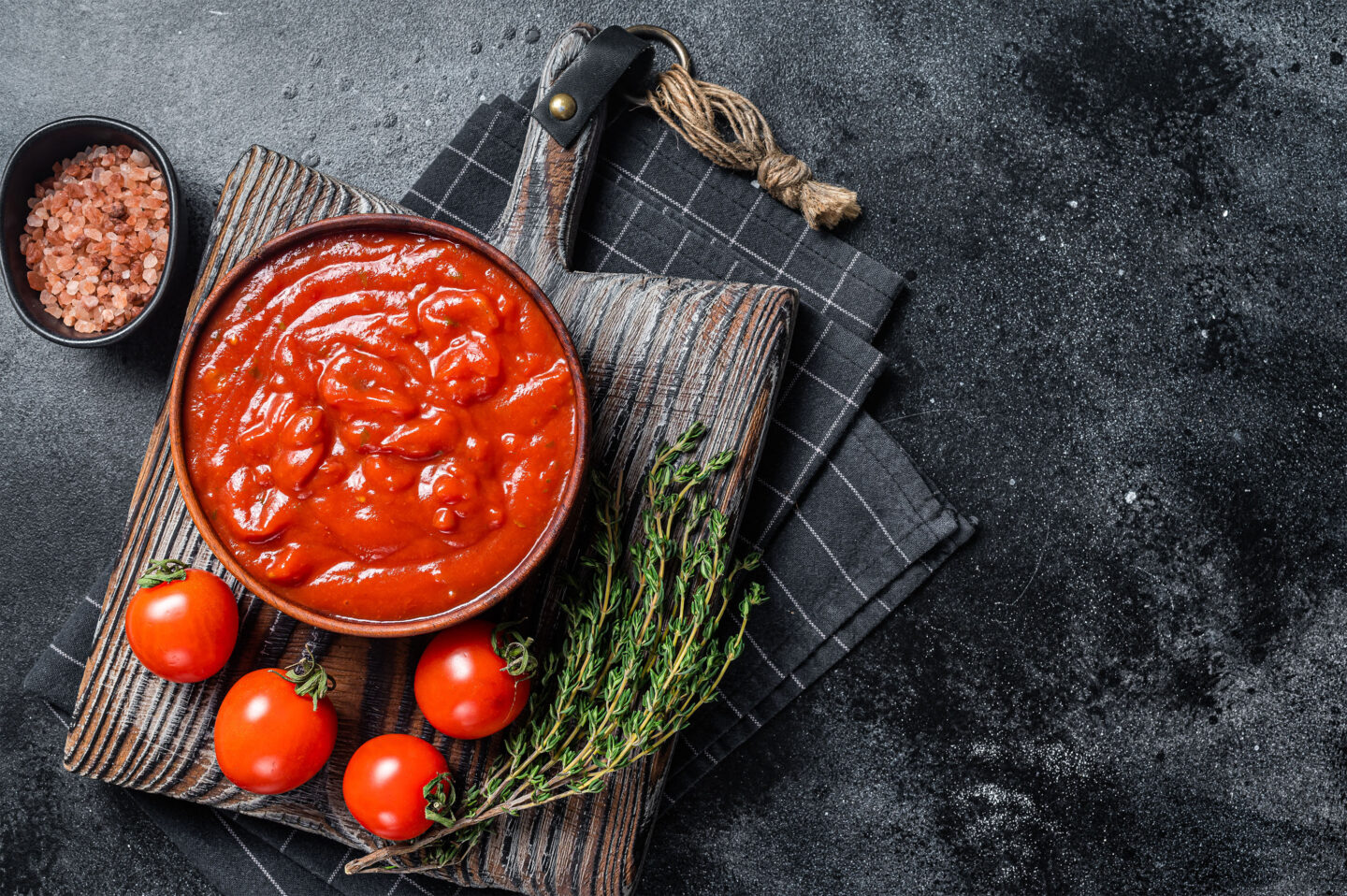
Although it can take hours and sometimes most of the day to make, this sauce isn’t exactly labor-intensive. Process some fresh tomatoes through a tomato mill to get rid of the seeds, then heat the remainder until it reduces to a sauce.
Simple right? Not always. Getting the consistency right can be a challenge if you’re new to sauce-making. The problem some will face is how to thicken tomato sauce so that it isn’t too watery. If that’s you, then keep reading for some simple ideas to thicken sauce.
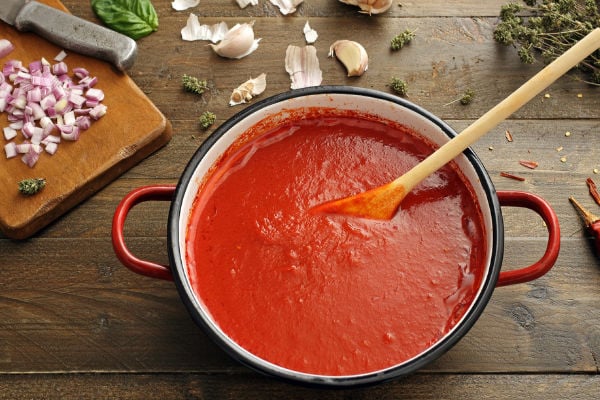
Table of Contents
How to Thicken Tomato Sauce: 8 Options
What spaghetti sauce texture is ideal? The pasta sauce you may be used to using from a store-bought jar is relatively thick. This is thanks to the use of emulsifiers. Homemade sauce will usually be thinner, which is fine for most recipes. Once added to a Bolognese or ratatouille, it thickens further. If you still want to thicken your sauce, then here are eight options:
1. Reduce liquid prior to cooking
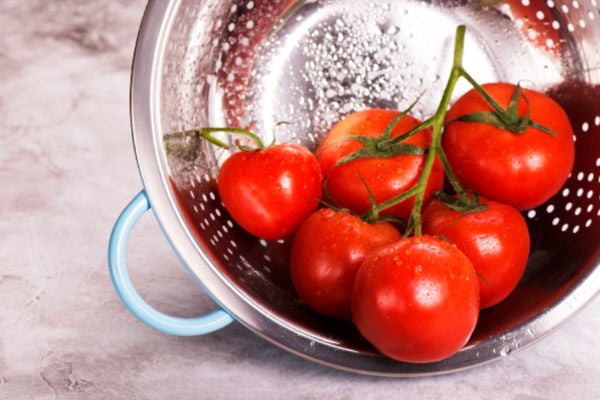
Tomatoes are loaded with water (some have more juice than others). To reduce this moisture, slice them up the day before cooking and pop them in a colander or strainer with a large bowl underneath to collect the juice. This step will reduce the moisture content, resulting in a thicker sauce the next day. We recommend investing in a quality tomato knife to make chopping them so much easier.
2. Keep calm and continue cooking

As your sauce simmers over heat, the water has nowhere to go but into the air as steam. Keep cooking long enough, and the sauce will thicken nicely. Depending on the temperature at which you’re cooking the tomatoes, it can take up to a whole day.
Quick Tip 1: Tomato sauce can be thickened effectively in a casserole dish in the oven on very low heat (250°F or 120°C). The benefit is that you won’t have to keep stirring and checking to see if your sauce is burning.
Quick Tip 2: If you need to reduce your sauce fast then cook it on the hob, on a simmer, using a saucier pan, sauté pan or a shallow frying pan. The increased surface area will speed up the cooking process, but you’ll need to keep a close eye on the pan to make sure it doesn’t burn.
3. Use cornstarch
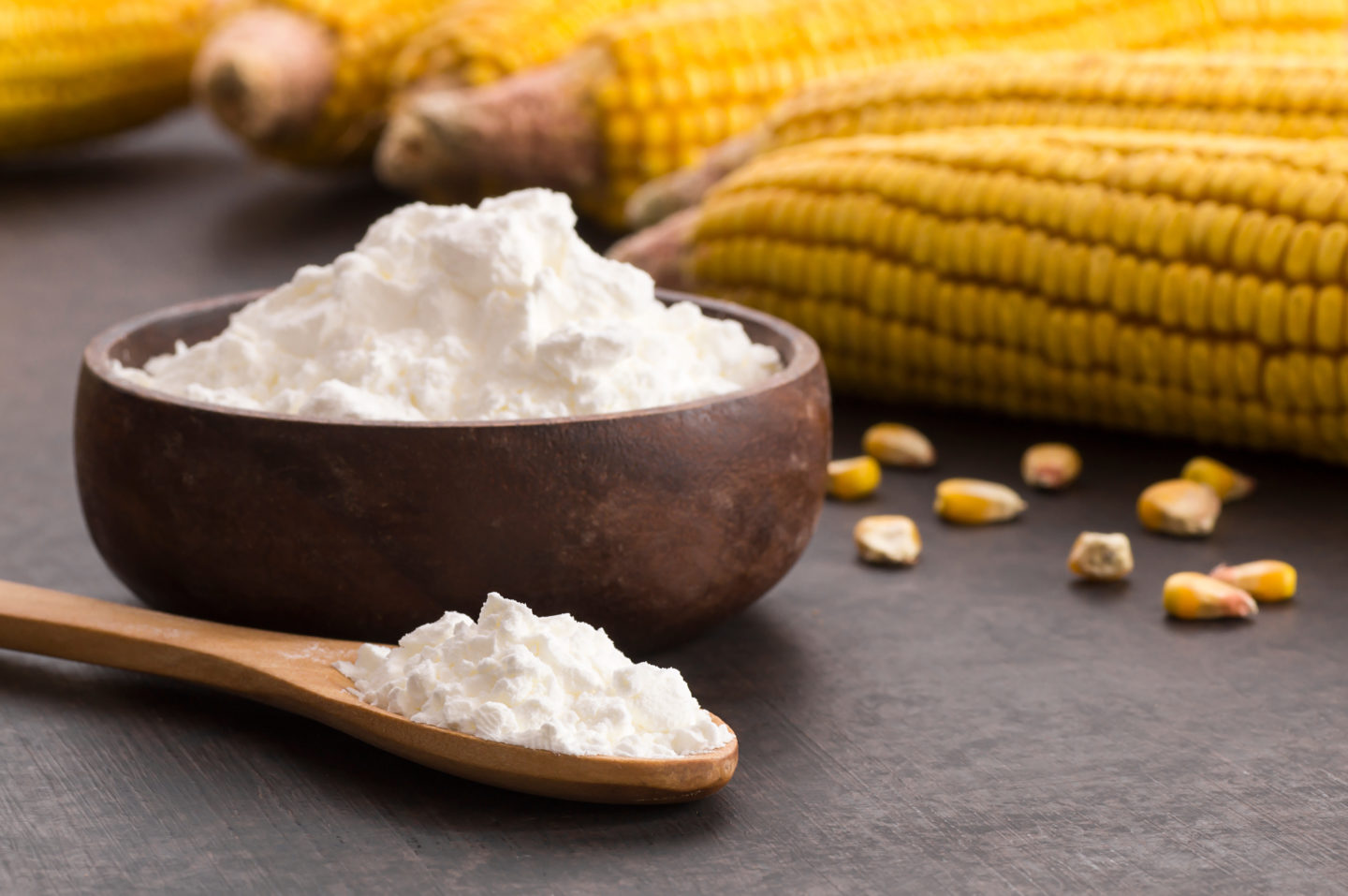
If you want to thicken your sauce within a few minutes, then add cornstarch in small amounts—about 1 teaspoon at a time. Stir the starch in and wait to see what happens. If you don’t get the result you’re looking for, add another teaspoon and continue stirring. It doesn’t take a lot of cornstarch to thicken sauces, so don’t go overboard, or you’ll end up with a starchy, gluey sauce.
4. Work with the pectin

Tomatoes are high in pectin, so squeeze the juice of half a lemon into the sauce. The acid from the juice will firm the pectin, causing it to thicken. The same advice for cornstarch applies to this option: too much juice will overwhelm the sauce and result in an unpleasant taste.
5. Add a dash of tomato paste
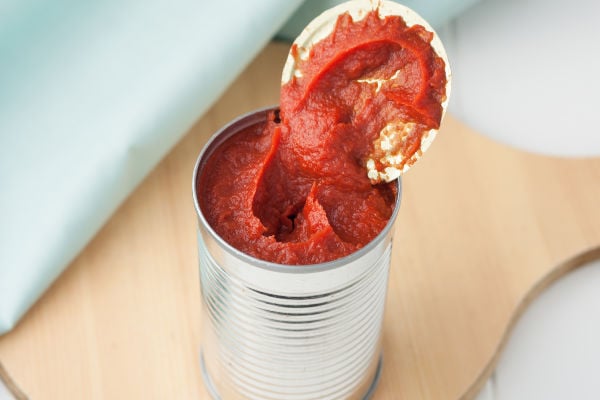
A tablespoon of tomato paste will work wonders for your sauce, as well as adding some extra flavor. It’s effective as a thickener due to the low water content and high tomato solids.
6. Blitz that sauce!
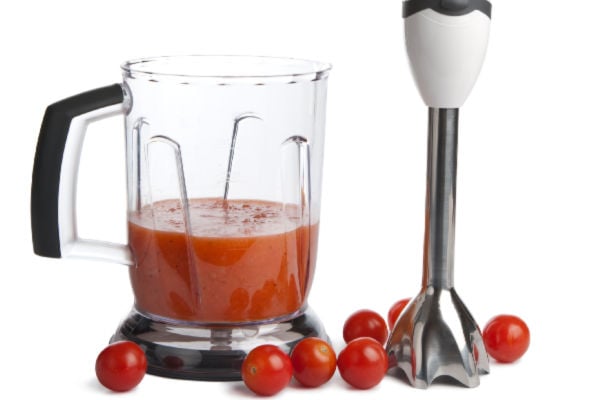
Is the texture of your sauce looking separated? Take a look, and if there are chunky, solid pieces and watery juice, then use an immersion blender (stick blender) to give your sauce a quick pulse or two. Don’t keep the blender running too long because your delicious chunky sauce will lose its texture.
Before blending, add a few splashes of olive oil to help bring everything together into a tasty-looking emulsion.
7. Whisk up a roux
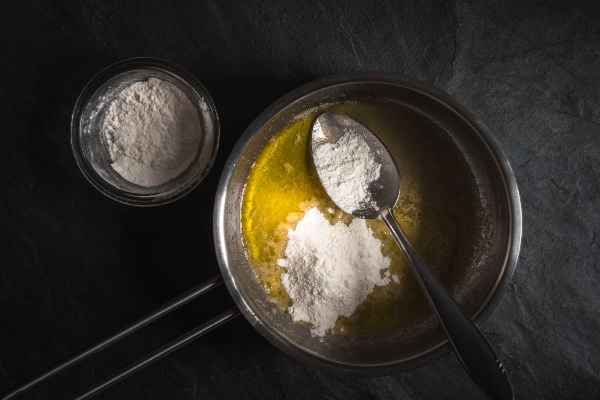
Making a roux adds an extra step, but it’s a quick one and will bring great results. Add one tablespoon of butter to a saucepan and allow it to melt, then whisk in one tablespoon of all-purpose flour. Allow the mixture to cook for a few minutes until the starchy taste in the flour cooks off. You’ve created a roux that can be added to the sauce. It will work a lot like corn starch, only better.
8. Add mashed potato

It sounds a little crazy, but mashed potatoes actually work well. If you have some cooked potatoes in the fridge, then mash one up, add it to the sauce, and use a blender to pulse it a few times until combined. The sauce will thicken, but keep in mind that the flavor won’t have a pure tomato taste. This may not be a problem, depending on what you’re using the sauce for.
Summing Up
That’s all there is to thickening tomato sauce. You could use one option above or a combination of them. For example, reduce the liquid overnight, then when cooking nears completion, add a roux and some lemon juice.
Keep in mind that home-made tomato sauce tends to have a runnier consistency than store-bought stuff. So you may be worrying about nothing. Test out how the sauce works in spaghetti Bolognese to see if it tastes good and if the consistency is on point. If necessary, buy (or harvest) several pounds of tomatoes and practice perfecting your sauces all weekend! Keep experimenting until you get it right. Fail, fail, succeed: that’s how it usually works to develop new recipes, and it’s part of what makes cooking rewarding and fun.

Leave a Reply